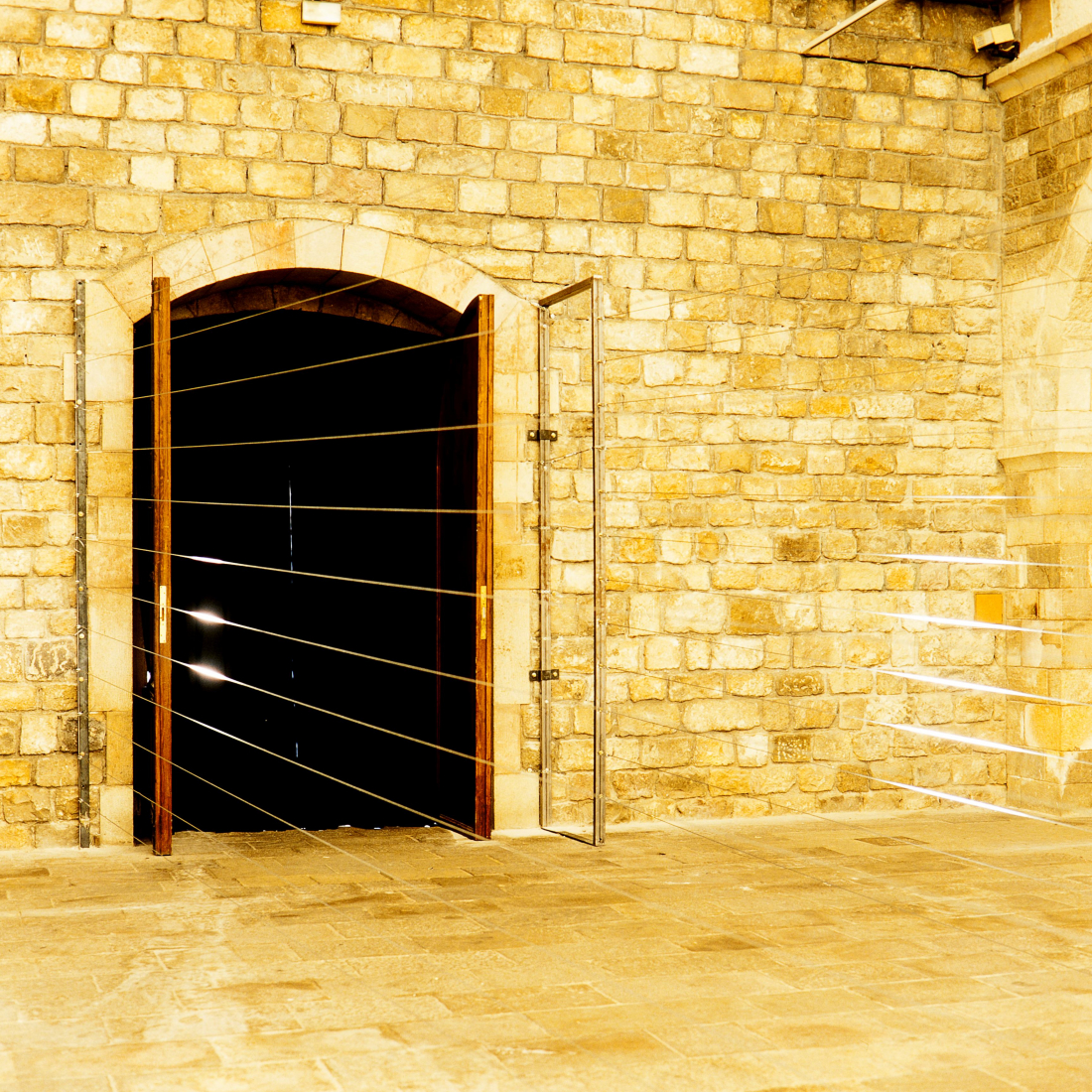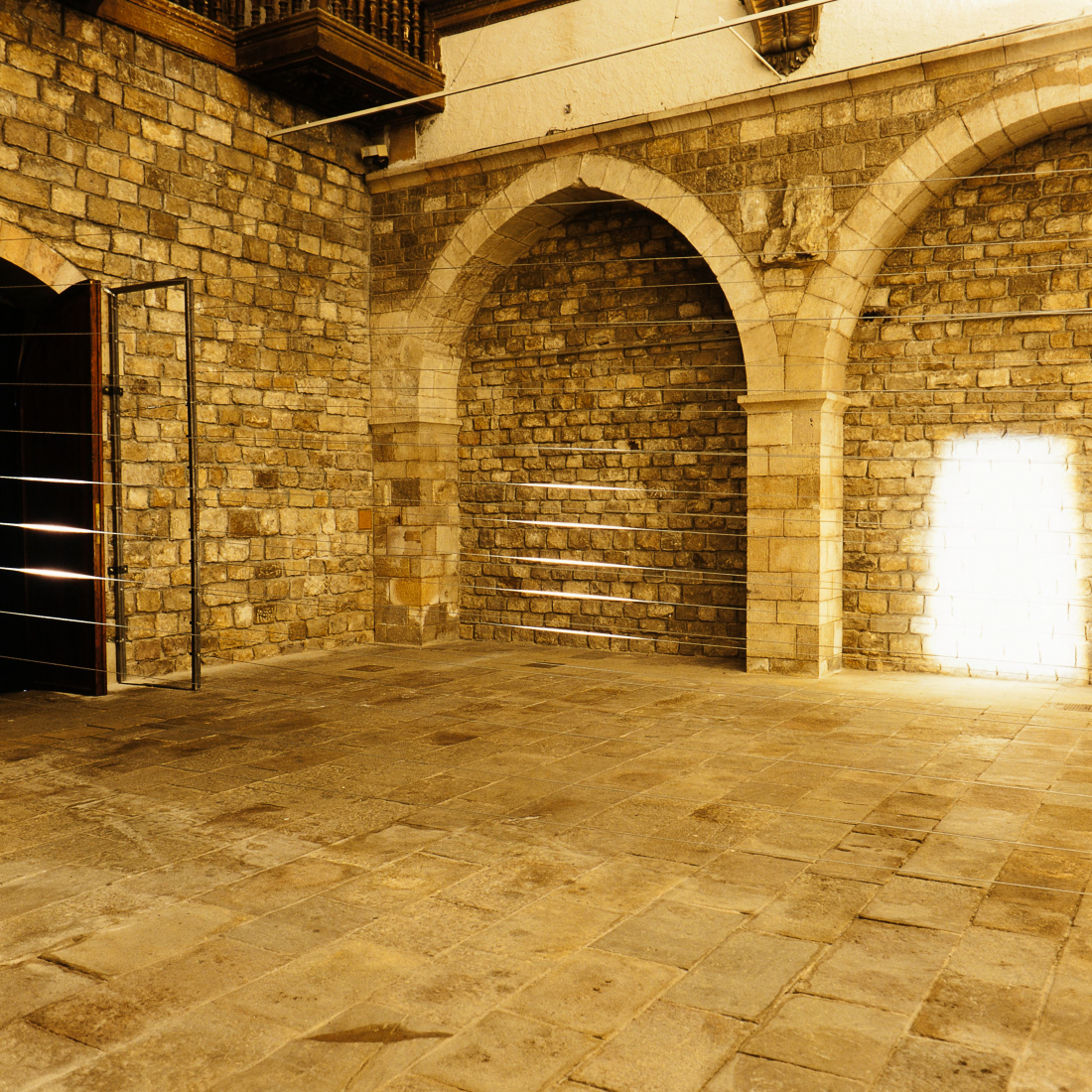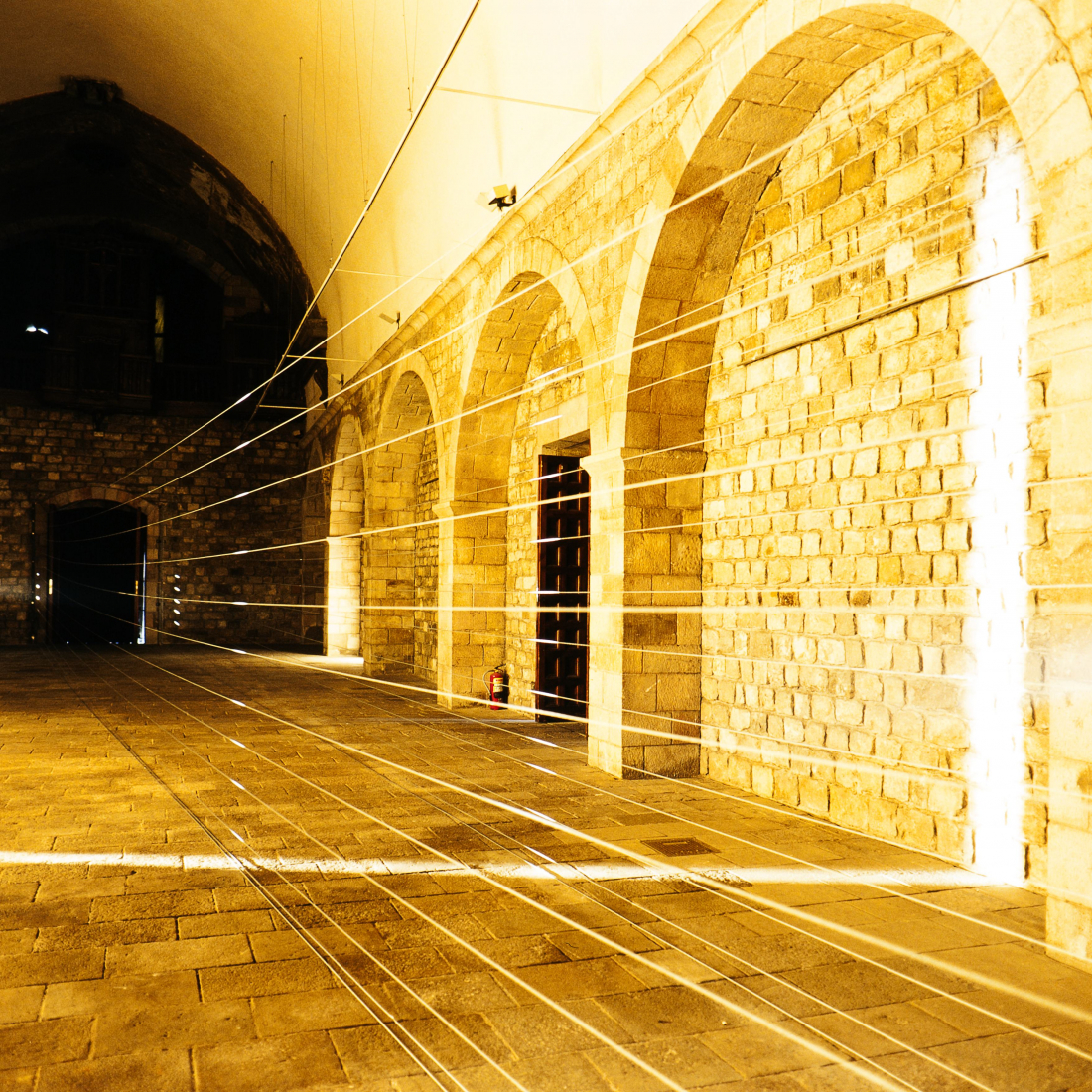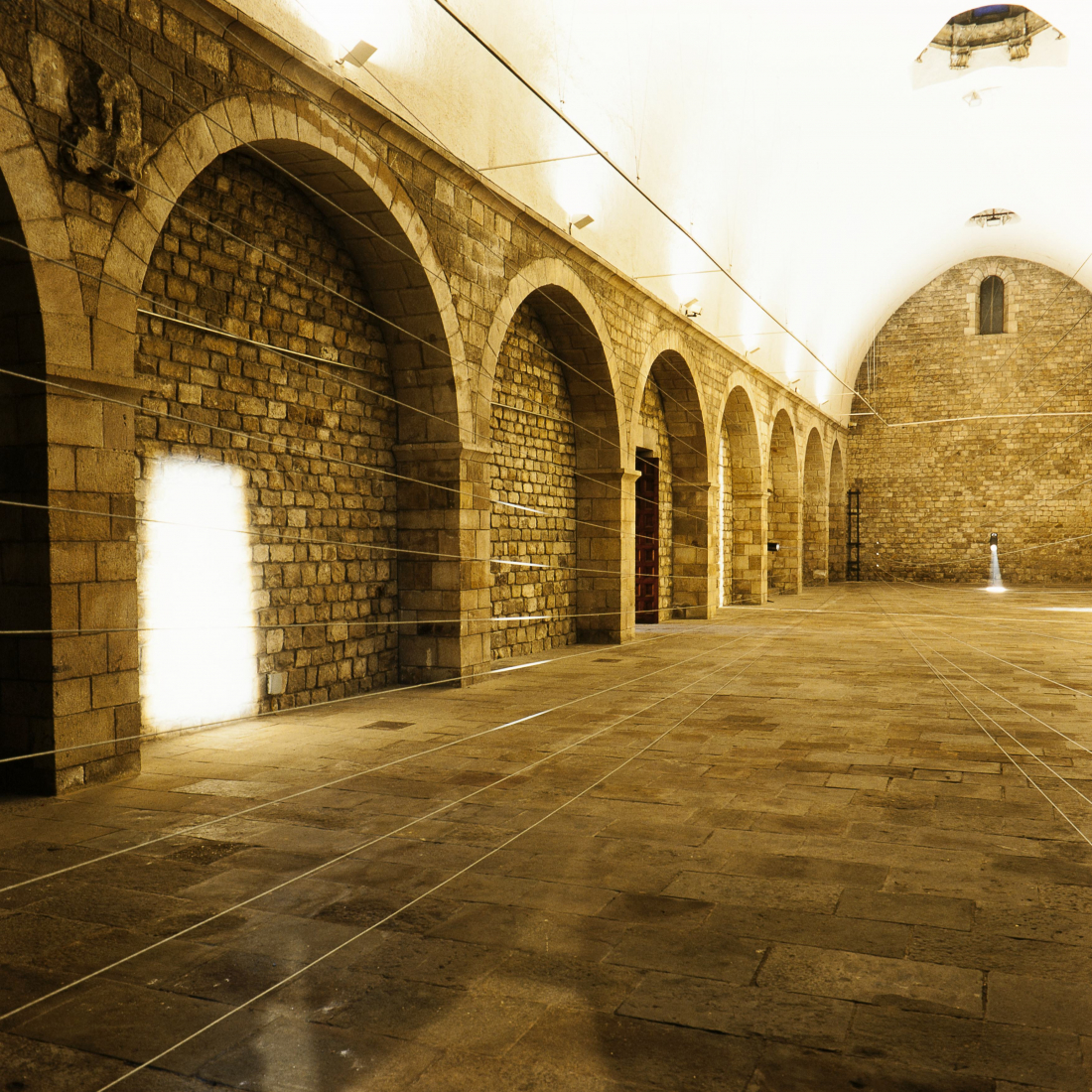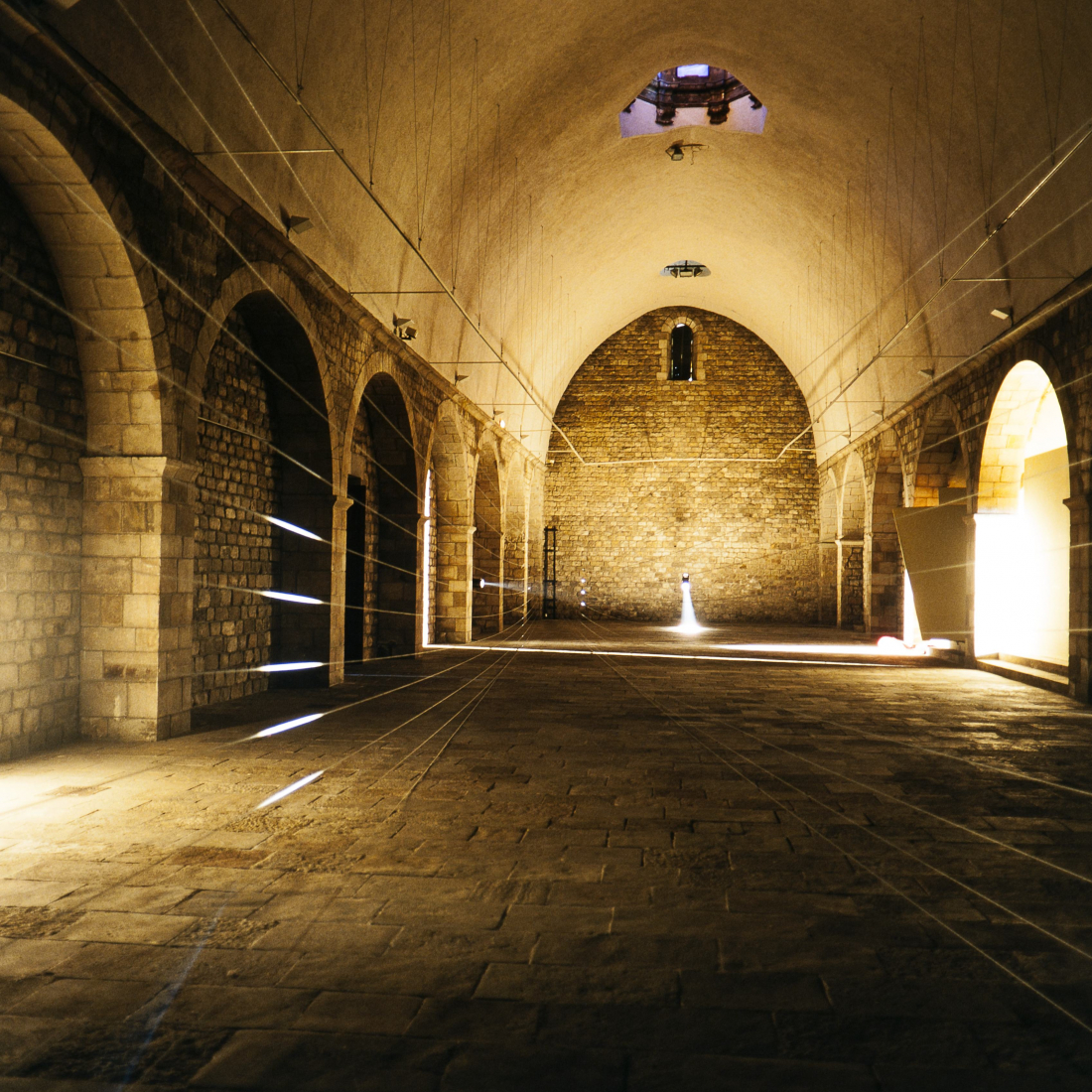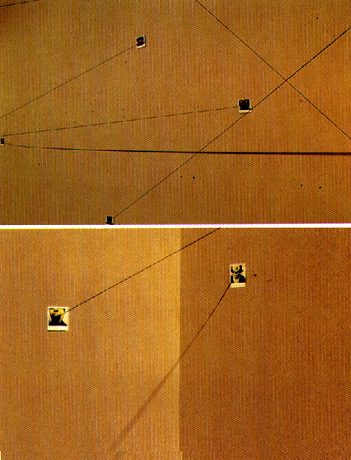Noche artificial
To hear the rumor of silence
Since the year 1897, Stéphane Mallarmé wrote Un cop de dés, the enigmatic voice of silence, emptiness, absence or spaces in white, began to be heard and penetrated with progressive intensity in fields of creation both heterogeneous and at the same time as close as music, theater, painting, dance, sculpture, architecture or any other artistic manifestation arisen from the interior of a creator eager to communicate to whom I would like to hear some bitter facet of its complex subjectivity. In this sense, if the extreme importance that Mallarmé granted to the blank spaces responded on the one hand to what he considered to be the mission of poetry, on the other it served to show that he came to evoke consciously and Just the intensity the true voice of silence was a task as much or more difficult as to write the verses of a poem.
When considering white spaces as an element in the configuration of his poetry, Mallarmé opened its doors to a type of art that, independently of the way in which it was manifested, would struggle to replace the intention by chance, would advocate to completely eliminate the subject and would be oriented, above all, towards the search for silence. However, if from that poem to this day many creators who, with reasoned legitimacy, have been associated with what Susan Sontag called the aesthetics of silence, is nothing more than between the fifties and seventies that the most extreme consequences of Their research began to be formalized in a clear and explicit way.
Without forgetting the enormous contribution that both the work and the personal attitude of the artists contributed towards the silence of creators such as Rimbaud, Witgenstein, Valéry, Duchamp or Beckett, the artists who continue to stimulate our creativity on this journey come from of different disciplines. So different that, although establishing the union links is often a difficult mission, it allows, on the other hand, to verify that the only luggage that is needed in the search for silence, emptiness, absurdity, solitude or absence, is a strong personal conviction, important doses of responsibility and an inescapable commitment to society as a whole. What led John Cage to perform his musical work, the minimalists, his sculptures, Antonioni and Bergman, his cinema and Pinter, his theater. Just without it, it is probable that neither the emptiness nor the silence would have been incorporated into contemporary creation in the way some artists continue to do it, considering that both emptiness and mute are, above all, forms of language (in some cases of protest or accusation) and, at the same time, elements of dialogue. Exactly how the work of art, whatever its form.
Now, among all, the one who contributed most to the fact that, after Mallarmé the silence -i, by extension, the emptiness- was considered an element of the work of art, it is, without a doubt, John Cage Through a subtly dialectical work, Cage not only made silence express itself with an unexpected eloquence, but motivated that, in a different field as well as sculpture, the space that until then had surrounded the works - empty space, unoccupied space - acquired the same significance as the space they occupied. In this way the entire space became << sculpture >> and immisiting itself into a heritage that until then was exclusive to architecture, began to lose its centrality and caused the viewer to have to travel in order to experience it in its fullness.
Although to perceive the fullness, it has to conserve an acute sense of the emptiness that delimits it, it is only possible to capture the emptiness in those areas that are completely full. And so does silence: not only does it exist in a world full of noises but it is thanks to those who can enjoy its identity. Consequently, if the resource to speak of what is not often can respond to the ignorance of what is meant, to speak of concepts such as emptiness, silence, absence or loneliness we will have to refer necessarily to each one of its complementary ones . How Cage did with silence. And if we did not do that in this way we would not know what we should say.
Although it is impossible to equate the motivation of all these creators with that of those who are still hiding today to hear the rumor of silence, in the fight against noise and fullness, nobody ever has the last word. But there are things to say. And it is from behind his work that some artists want to know.
Although Connie Mendoza's work is new to many of us, there are some aspects of her work that, through the dialogue they maintain with their complementaries, participate fully in that struggle; although his is always in three bands. For that reason, considering that in his work the role of the viewer is both more important or that of other elements that integrate it, he constructs a space -or better still a stage- where the protagonist of the " A play that is represented can be any of the spectators who, seeing themselves in the middle of the scene and almost without realizing it, walks blindly in their interior in search of something. Just the viewer who, when he becomes aware of the place he occupies and the dimension of a debate that, like what the empty space holds with the busy man, is doomed to eternalize himself, he perceives the words that reverberate in the emptiness of the his silence And, as Valère Novarina says, "le théatre est la passion de la pensée dans l'espace".
However, unlike what happens with the theater, the alterations that Connie Mendoza performs in her work do not depend on both the sequential development and the architectural space that surrounds it. In this sense, his work is not theater but theater space. And between the veins of this space, which turns the actor into it, places a work of such subtlety that, if it were not for camouflage or the way light is passed, not only is it I could see but it could not exist either. So if the sound that made the silence we only listened to it when it was going through the noise, to see the shadows that protect us, we will have to cross a strip of light. And that can only be done every time we are alone.



